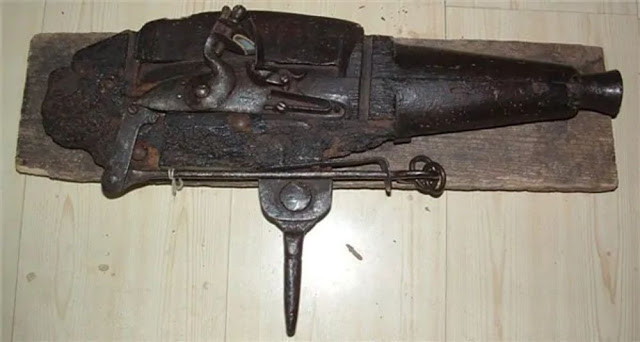In the 18th and 19th centuries, grave-robbing was a serious problem in Great Britain and the United States. Because surgeons and medical students could only legally dissect executed criminals or people who had donated their bodies to science (not a popular option at the time), a trade in illegally procured corpses sprang up. These body snatchers came to be known as “resurrectionists” or “resurrection men.” And cemetery guns like these were one dramatic strategy used to thwart so-called “resurrection men.”
The “cemetery gun” is a flintlock pistol, mounted on a rotating base and stand, which would allow it to swing freely. Set near the foot of the grave and pointing towards the head, the gun would have been triggered by a series of three or four tripwires extending in an arc pattern and encompassing the fresh grave. Unsuspecting thieves, working under cover of darkness, would presumably not notice the tripwires, stumble upon them, and meet their own demise — or at least get a dose of lead.
Grave-robbers evolved to meet this challenge. Some would send women posing as widows, carrying children and dressed in black, to case the gravesites during the day and report the locations of cemetery guns and other defenses. Cemetery keepers, in turn, learned to wait to set the guns up after dark, thereby preserving the element of surprise.
Though it is not clearly documented whether the guns actually worked, it would be safe to expect they were at least a great deterrent if not a truly fatal tool of defense. There are accounts from around the U.S of these guns being available for either rent or purchase by families who wished to protect their recently-deceased loved ones. Those who could not afford the gun rental were at the mercy of the body snatchers.
One of the only known surviving examples of cemetery guns is on display at the Museum of Mourning Art at the Arlington Cemetery of Drexel Hill, Pennsylvania. Museum curators date the gun to 1710, making it one of the earliest models of cemetery guns.











0 comments:
Post a Comment